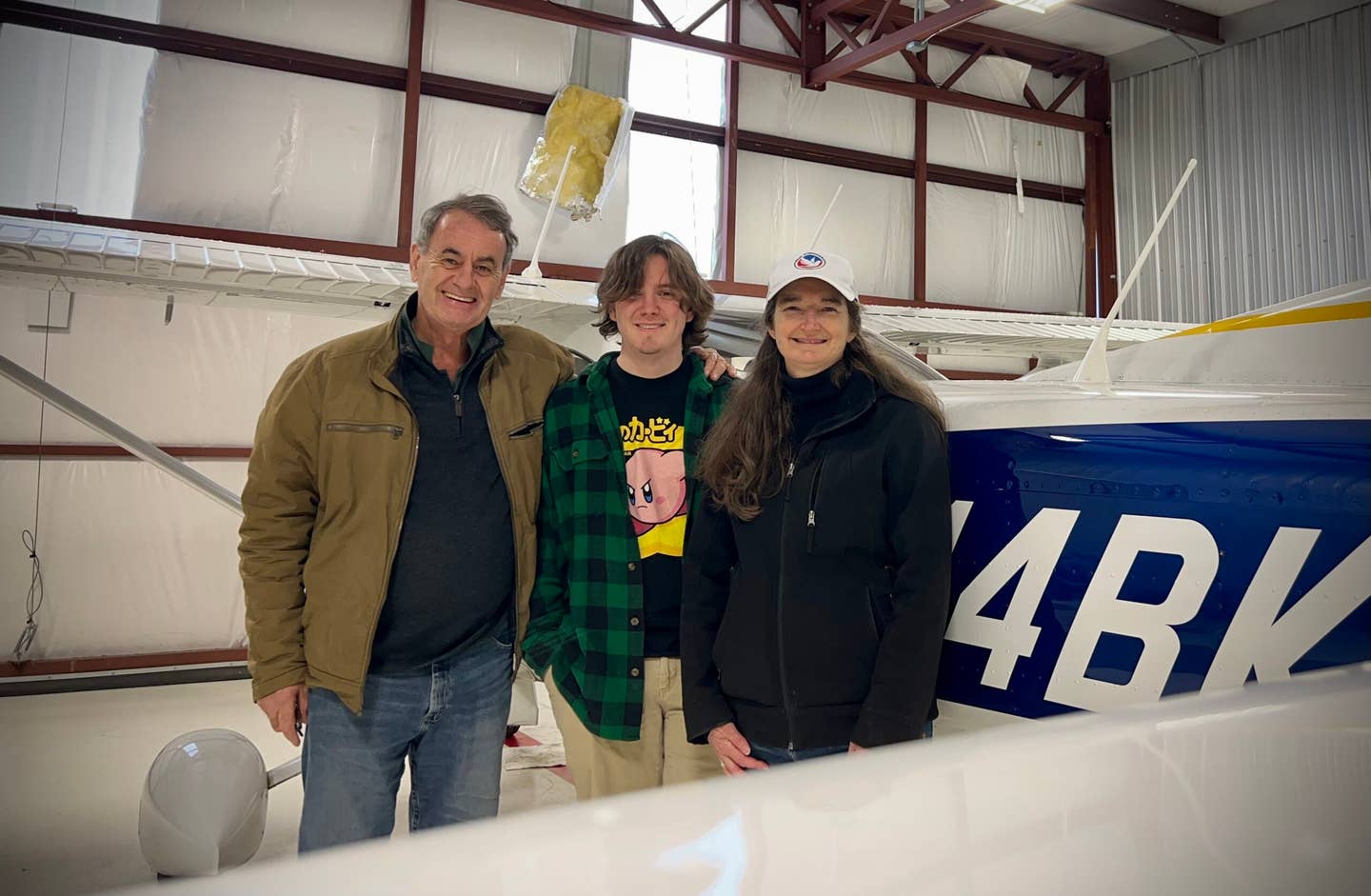The Swift and First Solos
A holiday ornament triggers a flying memory—and cues a new chapter.

The 2021 ornament from Sporty’s Pilot Shop sparkles with a Globe Swift. [Credit: Julie Boatman]
I couldn’t believe the coincidence.
Of all the classic airplanes in the world, what are the chances in one season both Sporty’s and Hallmark—both great purveyors of aircraft ornaments—would choose the Swift for their offering in 2021?
We only had our 1946 Globe Swift for three years, my former husband and I, but she made an impression. I called her my “Little Deuce Coupe” for her low-slung style and sporty handling in the air. With a not-at-all-stock Continental IO-360 engine pumping out 210 hp, she would indeed “blow them out of the water like you’ve never seen.” In this case, that meant the tail came up almost as soon as you put the throttle to the dash. Takeoff rolls, we measured in hundreds of feet.
I flew her for dozens of hours before I took her up solo. I’d discovered nuances to landing her well, such as the sweet spot in airspeed on final (about 80 mph on the vintage airspeed indicator) and the tail-low wheel landing she preferred. The delay between when we bought LDC and when I soloed mostly sprung from a lack of necessity—we were always going somewhere—as well as a minor crisis of confidence.
But there’s a reason why we solo an airplane, and why we ask those learning to fly to go up on their own during the course of training. You never really know until you go on your own. You solve the confidence conundrum in a hurry, too.
It was a late September day at the Frederick Municipal Airport, and I’ll never forget taxiing out on a peaceful afternoon. I’ll never forget those three landings. We didn’t shoot video of everything back in 2006, when the flight took place, but we had this one for the record.
On that day, the Coupe and I made friends for life.
Flashback, and Flash Forward
That Swift flight took place about 19 years after I’d soloed for the first time, in October 1987, in a little yellow-and-white Cessna 150, N45132, at the Green Castle Airport in Oxford, Iowa. The change in takeoff weight—after losing my instructor’s FAA-average-person-plus-size leaving my 16-year-old self in the left seat—had turned that 150 into a rocket, too.
There have been many, many memorable flights since, both on my own and with others, but I didn’t purposefully “solo” an airplane again until just last weekend.
I’d been flying a Socata TB-30 Epsilon over the past year, slowing accruing hours between work, and trips, and maintenance downtime—and a pandemic—but hadn’t yet made that special flight on my own.
Frankly, I was ready to be free of the opinionated cargo in the back seat—no offense to my instructor. A solo flight not only gives you confidence in your own capabilities, but it also takes away the middleman, allowing you to build your own relationship with the airplane.
The Epsilon is more thoroughbred than coupe, with a 300-hp Lycoming AEIO-540 up front, a short and snappy wing, and flight controls you need only think about to command. In the panel, “Frenchy” has a Garmin G3X Touch and other jazzy accoutrements—but her stock gauges are in meters and French, adding to her allure.
The winds blew from the northwest, in the neighborhood of 15 to 20 knots—but the TB-30 carries a demonstrated crosswind component of up to 25 knots, depending on the disposition of the flight. What a Swift turns into like a weathervane, the Epsilon shrugs off in un style très français.
Yes, we made friends for life. And I’m looking forward to the long-shot chance that I’ll find a new ornament for the tree next year of an Epsilon to remind me of that special bond.

Sign-up for newsletters & special offers!
Get the latest FLYING stories & special offers delivered directly to your inbox






